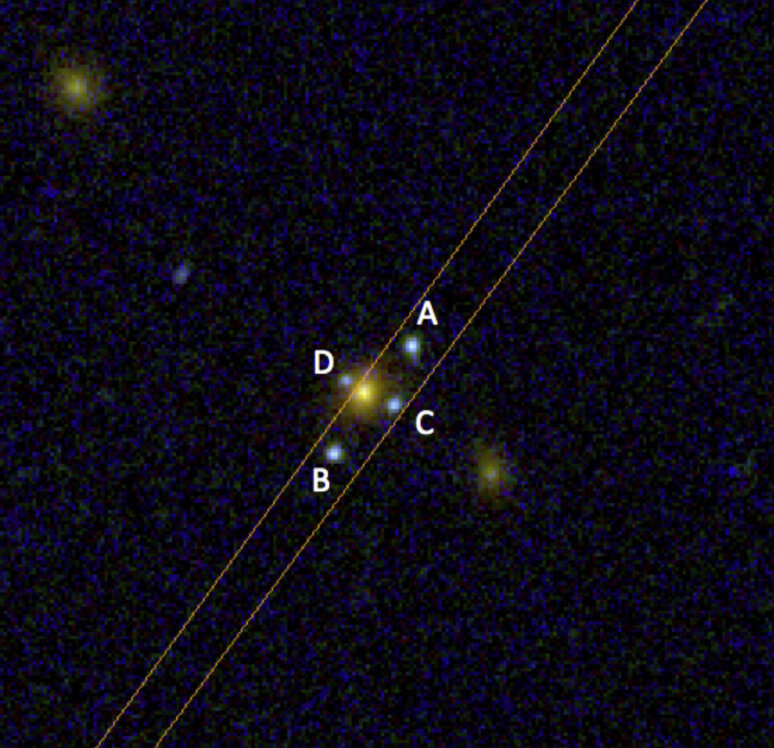Thanks to the successful alignment of two distant galaxies and the sharp vision of the Hubble space telescope, astronomers were able to obtain the second in the entire history of observations the image of the Einstein cross, a phenomenon predicted by the General Theory of Relativity, which is a consequence of light deviation from a far source under the influence of a massive field created by massive foreground object.
Further analysis of the data showed that the lensed galaxy is at a distance of 20 billion light years from Earth and continues to actively form stars. The snapshot and the results of the study are published in The Astrophysical Journal Letters.
One of the most striking findings of Albert Einstein’s General Theory of Relativity is that the trajectory of light is bent by the action of matter. This effect can be observed in the case when the radiation emitted by a distant object passes near another on the way to the observer. The phenomenon is known as gravitational lensing, because it is comparable to the deflection of light rays by classic glass lenses.
Depending on the degree of alignment, distorted images of a distant object are arranged either in the shape of a cross, or stretched into rings or arcs. As a rule, a gravitational lens is very difficult to detect, because the distance between objects in images is usually very small, and high-resolution images are required to identify them.
Fortunately, Hubble has the ability to obtain such data, during the analysis of which astronomers noticed the candidate for Einstein’s Cross.
However, the detection of four points of light in the shape of a cross, located around the galaxy, does not guarantee that this is the result of a gravitational lensing. Therefore, we needed to show that all images belong to the same source. This requires spectroscopic observations. – study authors
For this reason, astronomers made observations of the object using the telescope Gran Telescopio Canarias. Thanks to the excellent weather conditions, they were able to clearly separate the light from three of the four images and show that it comes from one source.
Analysis of the data allowed us to confirm that Hubble photographed exactly Einstein’s cross, which received the designation J2211-0350 and was formed by an elliptical galaxy located about 7 billion light years from Earth, and a lens source at least 20 billion light years from us.
Usually the source is a quasar, but analyzing the data, we found out with great surprise that in this case it turned out to be a young galaxy with an active star formation.
-study authors
Hubble photographed Einstein cross, a galaxy 20 billion light years from Earth
Click To Tweet
The post Hubble photographed Einstein cross, a galaxy 20 billion light years from Earth appeared first on Upcosmos.com.
